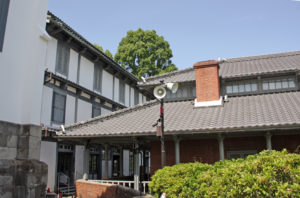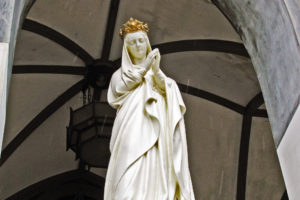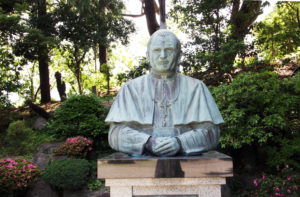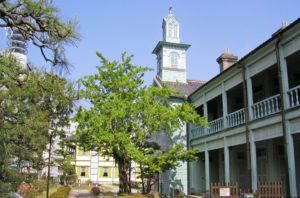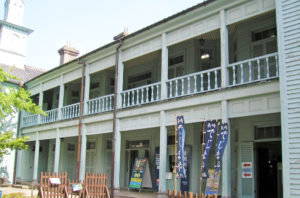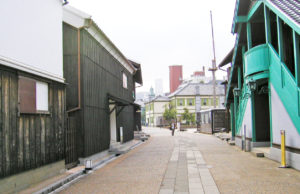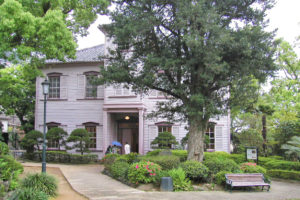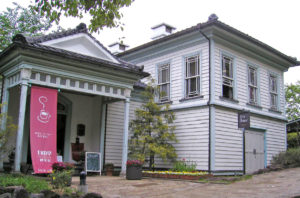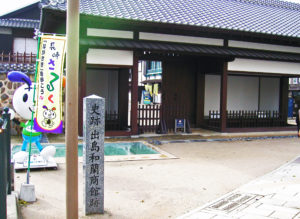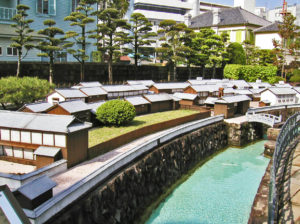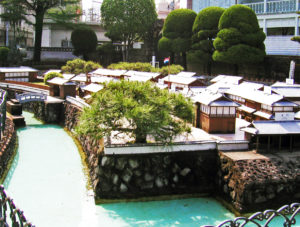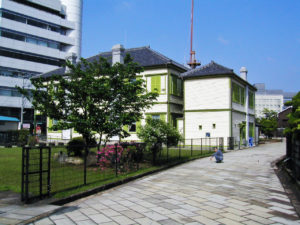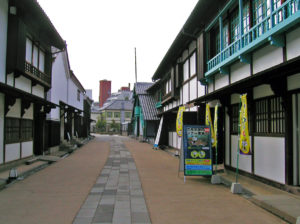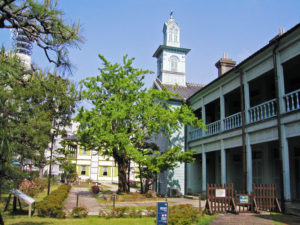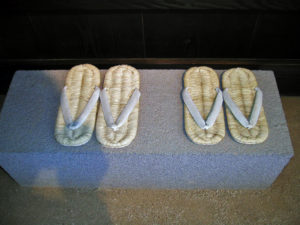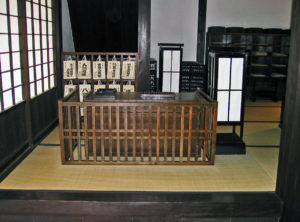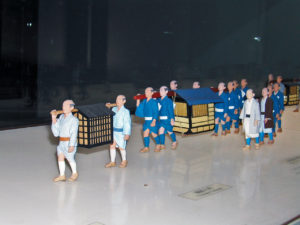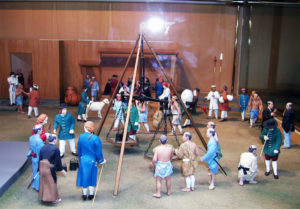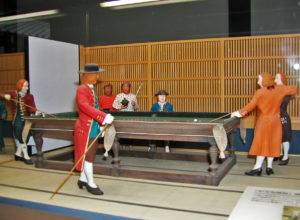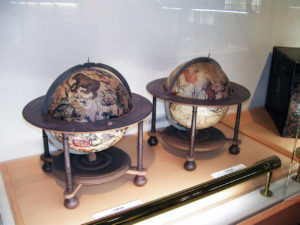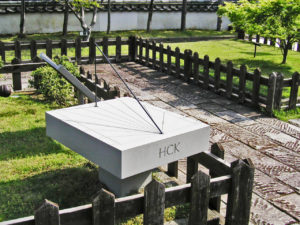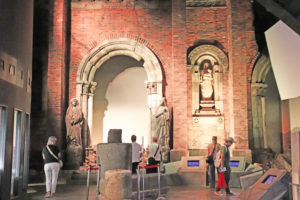Seishin girls’ School
Japan’s first Catholic girls’ school opened in 1891. It was relocated to a site built
in 1898. The building has now been renovated and is now Hotel Indigo Nagasaki.
The red brick structure and arched window frames remain intact, creating a nostalgic
Romanesque atmosphere.
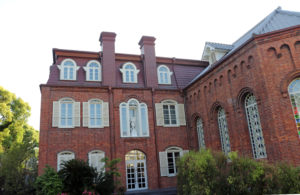 |
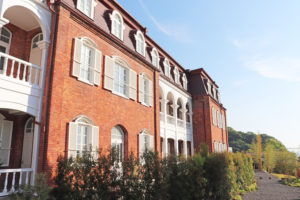 |
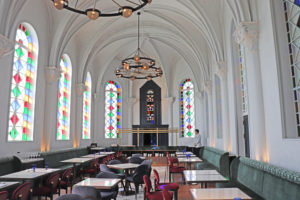 |
Oura Cathedral
The Cathedral is one of the significant Christian Pilgrimage site in Japan. Established 1865,
this church is officially known as “Oura Cathedral, the Church of 26 Martyrs.” It was built by
the French priest Bernard Petitjean of Fier who had been dispatched by the Foreign
Missionary Church of Paris to dedicate prayers to the 26 saints martyred on Nishizaka hill.
For this reason, the church faces Nishizaka hill. It was designated as a National Treasure in
1933 for its value as Japan’s oldest Gothic-style Cathedral.
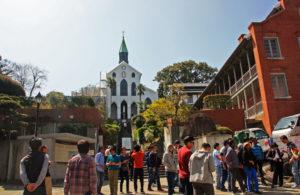 |
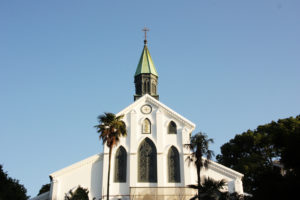 |
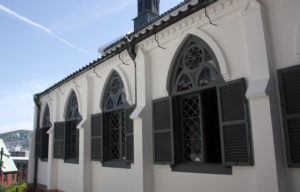 |
“On March 17, 1865, a group of peasants from Urakami came to the church and professed
their faith to Father Petitjean, thus revealing that Christianity had survived through the
centuries of persecution. The white marble statue of the Holy Mother at the entrance was built
in commemoration of the dramatic discovery of the “Hidden Christians.
|
|
|
|
General information
| Address | 5-3 Minamiyamate, Nagasaki-city |
| Access |
10 minutes walk from Oura tensyudo-mae tram station |
| Open hours | 8:00 to 17:45 |
| Admission fee | JPY 1,000 |
| Days closed | No closing days |
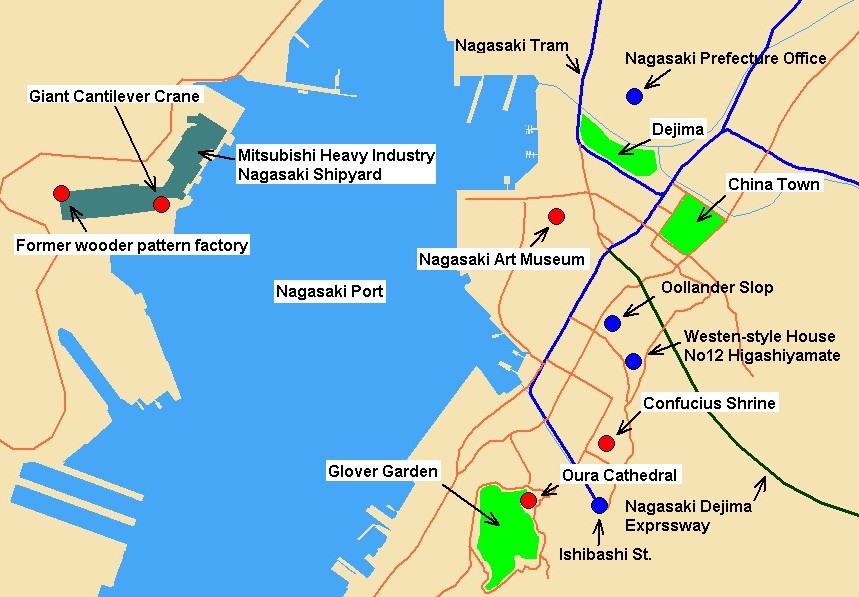
St. Andrew Chistian Seminary
St. Andrew Christian Seminary building stands on the eastern end of Dejima
and features a light blue exterior and a tower with a cross.
It is the oldest surviving Protestant Seminary building in Japan.
It was built as a church school in 1878 and opened the following year as the Dejima
Shinbashiguchi English and Japanese School.
It later changed its name to Dejima Shinbashiguchi Anglican Seminary and offered
theological education. After closing in 1886, it was used as accommodation for foreign
missionaries.
|
|
|
|

Glover Garden
Glover Garden is located on Minami-Yamate hill in Nagasaki-city, and nine traditional buildings
can be seen at Glover Garden. Among these, the Glover Residence, Orto Residence, and Ringer
Residence were built during the settlement era and are valuable buildings that have continued to
stand on this land for over 150 years.
Glover Garden boasts a great location overlooking Nagasaki Port with Mt. Inasa, a landmark
of Nagasaki-city, in the background.
In 1858, the Edo shogunate concluded treaties of amity and commerce with five countries:
the United States, the Netherlands, Russia, England, and France, and foreign merchants
with dreams came together to visit Japan as it entered a new era. Western-style buildings
covered with Japanese-style roof tiles line the hill overlooking Nagasaki Port, and these are
where the daily lives of foreigners from all over the world lived. “Glover Garden” is located here.
You can feel the history of Nagasaki from the end of the Edo period to the Meiji period in this
area, where the residences of foreigners from the settlement era, including the adventuring
merchant Thomas Glover, and the Western-style houses that were scattered throughout
Nagasaki-city are gathered.
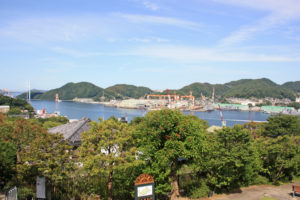 |
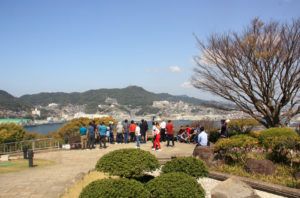 |
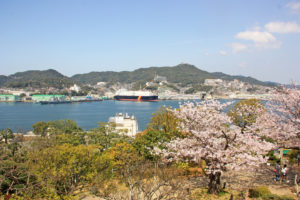 |
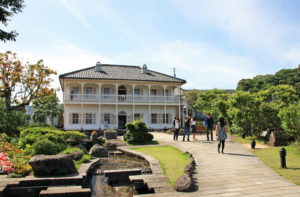 |
|
|
Glover Residence
Glover Residence is Japan’s oldest wooden Western-style building and is the UNESCO
World Heritage registered in 2015 as Sites of Japan’s Meiji Industrial Revolution
In 1859 an enterprising Scotsman named Thomas Glover arrive in Nagasaki and immediately
become involved in a variety of businesses. Glover operated a coalmine, founded the first
modern shipyard in Japan, supplied weapons to Satsuma clan in Southern Kyushu and
established Japan’s Kirin beer brewery. The Glover residence, built in 1863, evokes an era when
Western architecture and lifestyle were of great interest to Japanese. Several other merchant
houses have been relocated to the Glover Garden, which surrounds the house itself, making the
area a pocket of 19th-cencury Western culture overlooking Nagasaki Bay.
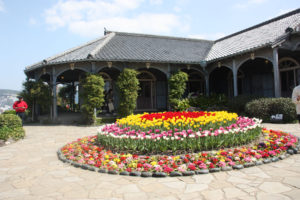 |
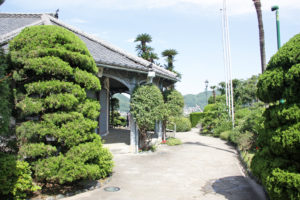 |
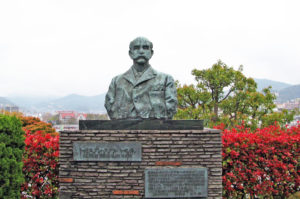 |
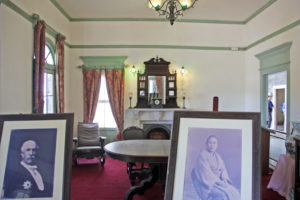 |
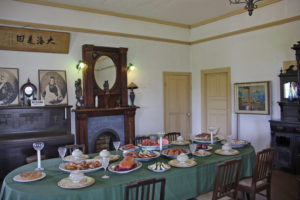 |
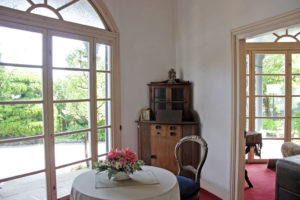 |
Golver Residence is generally believed to have been the scene of Puccini’s opera, Madame
Butterfly. Inside the park is the life-size statue of the famous opera singer, Tamaki Miura, who
received international acclaim for her performance as Cho-Cho-san in Madam Butterfly.
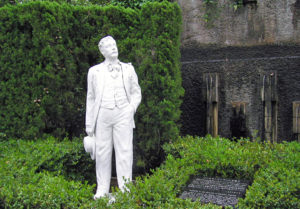 |
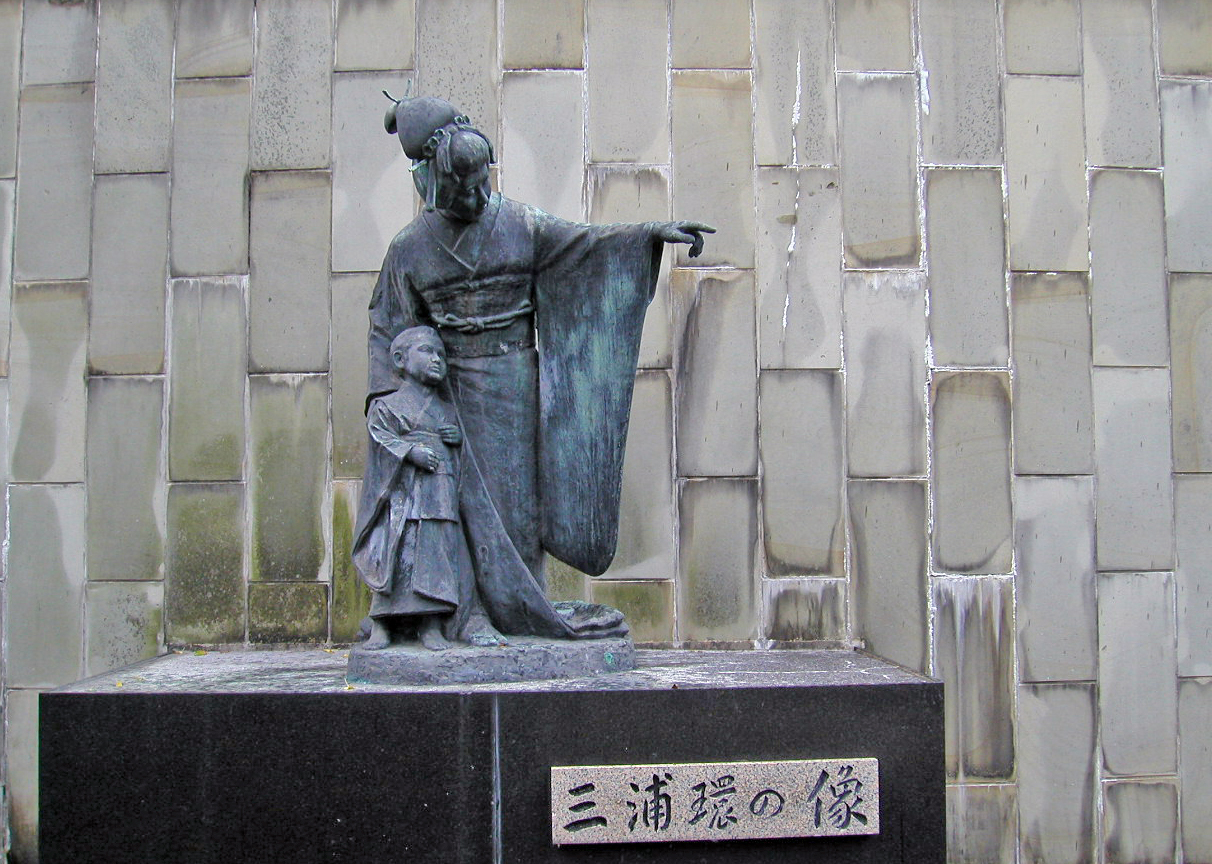 |
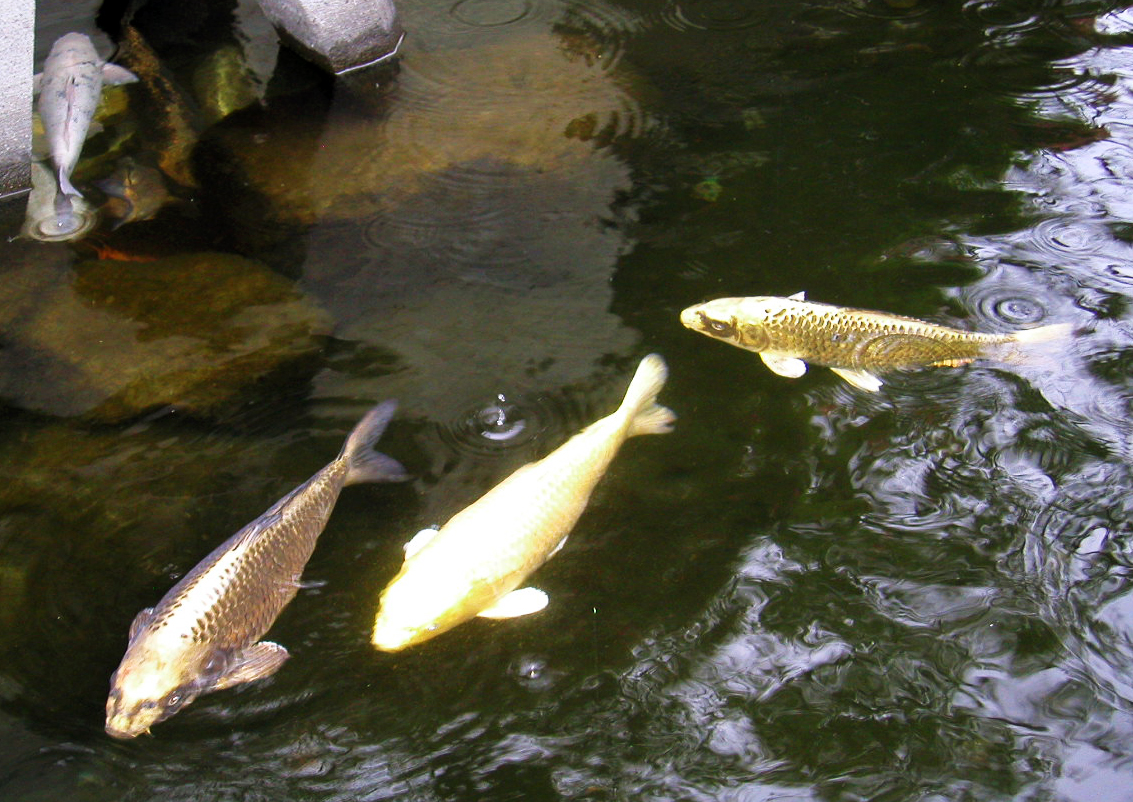 |
General information
| Address | 8-1 Minamiyamate-machi, Nagasaki-city |
| Access |
10 minutes walk from Oura tensyudo-mae tram station through in front of Oura Cathedral |
| Open hours | 8:00 to 18:00, until 21:00 in summer time and peak season |
| Admission fee | JPY 610 |
| Days closed | No closing days |

Peace Fountain at Peace Park
Peace Fountain reminds us of the tragic scene unfolded shortly after America dropped
the Atomic Bomb on Nagasaki at 11:02 am on Aug. 09, 1945. With the completion of the
Peace Fountain on Aug. 3, 1969, a monument inscribed with an epitaph was constructed.
Many people were burned deeply and died, crying and groaning for water. When people
recovered their peaceful life in 1965, a campaign for a Peace Fountain was launched.
Recorded on the monument are the name of the founder including the People’s Congress
for Prohibition of Nuclear Weapons and Promotion of Peace and the Committee for the
Construction of the Peace Fountain.
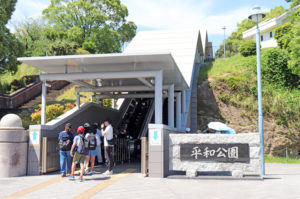 |
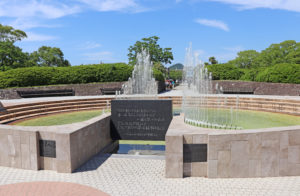 |
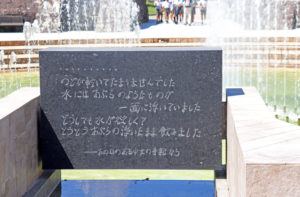 |
General information
| Address | Heiwakoen, Matsuyama-machi, Nagasaki-city |
| Access | 3 minutes walk from Heiwa-koen-shita Tram Station |
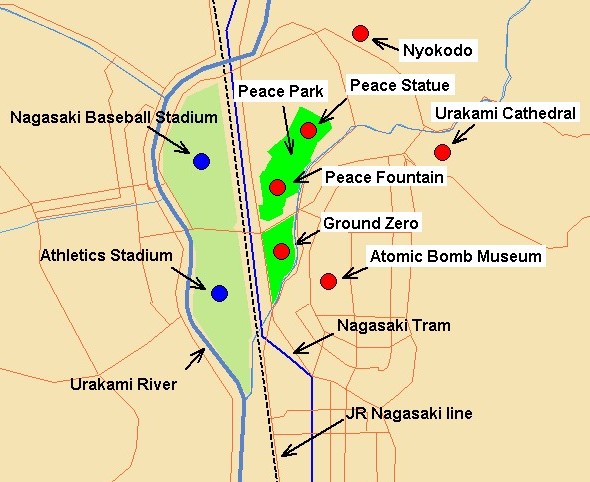
Dejima
Dejima was the fan-shaped artificial island in the bay of Nagasaki where was used
as a trading port during Japan’s National isolation of Edo period.
In 1636, the artificial island, Dejima was constructed to accommodate Portuguese
who lived in Nagasaki and to prohibit Christian missionary work.
In 1638, trade with Portugal was prohibited and Dejima becaome an uninhabited island.
In 1641, the Dutch trading post in Hirado was moved to Dejima, and then the history of
trade with the Dutch began at Dejima as only the gateway to European in Japan
Many European technologies and cultures were introduced here through Dutch until 1853.
|
Entrance of Dejima |
Fan-shaped artificial island, was built in 1636 |
Dejima used from 1641 until 1853 |
A project to restore Dejima is underway. In 2000, five buildings including the Deputy Factor’s
Quarters were completed and opened to the public.
|
Dejima International Club
|
Building of residence, cooking room, warehouse |
The old Dejima seminary, a Christian theological school |
In the spring of 2006, the finishing touches were put on the Chief Factor’s Residence, the
Japanese Officials’ Office, the Head Clerk’s Quarters, the No. 3 Warehouse and the Sea Gate.
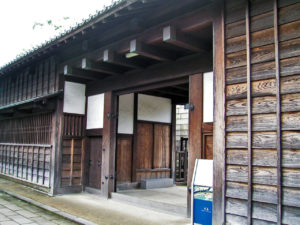 |
|
|
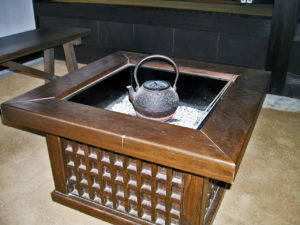 |
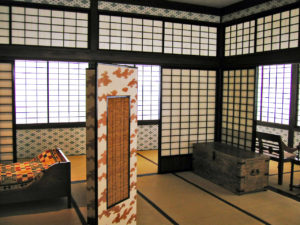 |
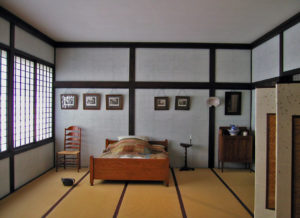 |
|
|
|
|
|
|
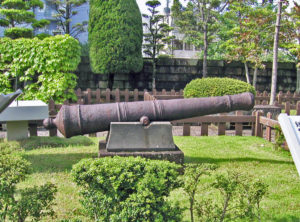 |
|
General information
| Address | 6-1 Dejima-machi, Nagasaki-city |
| Access |
a short walk from Dejima Tram station |
| Open hours | 8:00 to 21:00 |
| Admission fee | JPY 510 |
| Days closed | No closing days |
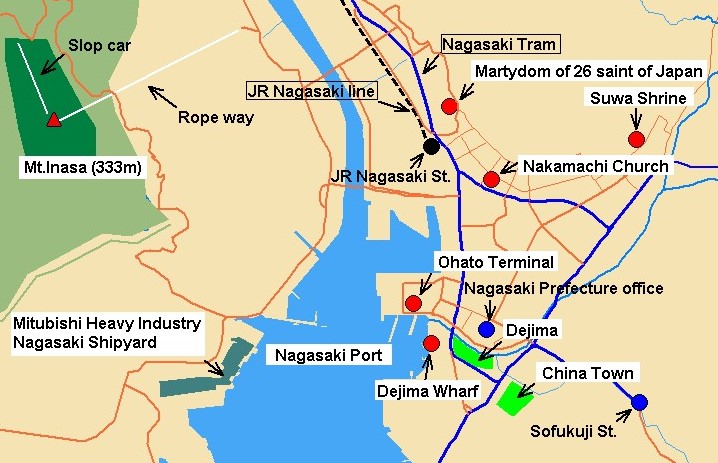
Peace Park
Peace Park was established in 1955 near the Ground Zero where the Atomic bomb was
dropped at 11:02 am on Aug. 09, 1945. Peace Memorial Ceremony is held in front of the
statue on August 9 every year and the Mayor of Nagasaki makes the “Nagasaki peace
declaration” for the whole world.
The Peace Fountain reminds us of the tragic scene unfolded shortly after America dropped the
Atomic bomb in Nagasaki at 11:02 am on Aug. 09, 1945.
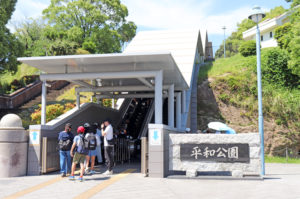 |
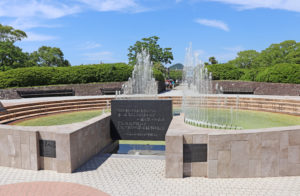 |
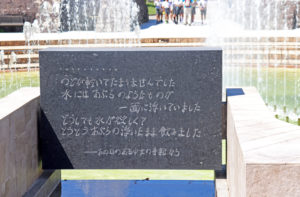 |
Bell of Nagasaki
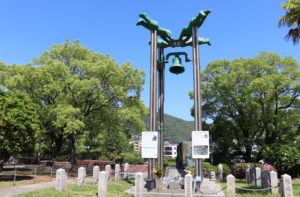 |
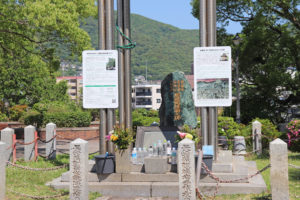 |
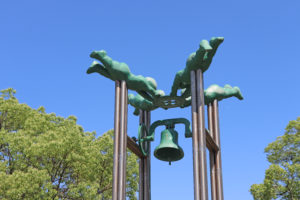 |
Completed in 1955, ten years after the Atomic bombing. The 9.7 meter high statue sitting on a 4
meter tall pedestal, made by renown sculptor Kitamura Seibo who born in Minami-Shimabara-city,
Nagasaki-prefecture in 1884. The raised arm points to the threat of nuclear weapons and the
out-stretched arm symbolizes peace.
 |
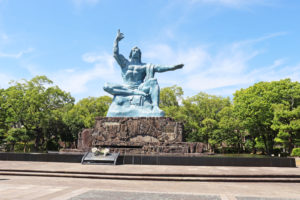 |
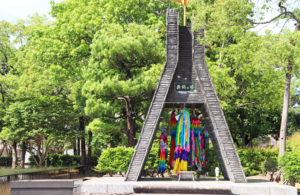 |
Monuments presented from all over the World
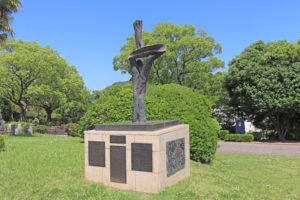 |
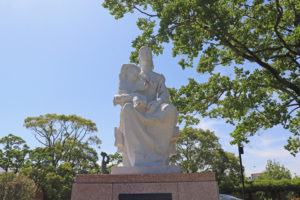 |
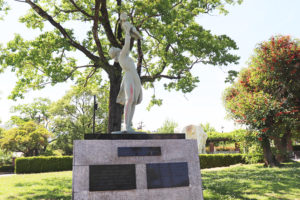 |
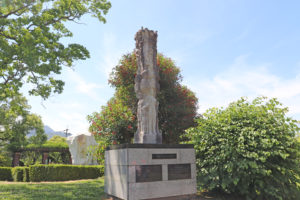 |
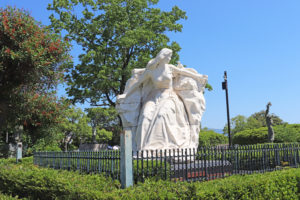 |
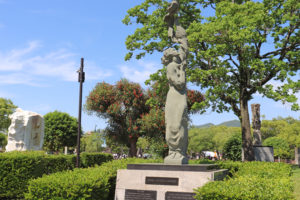 |
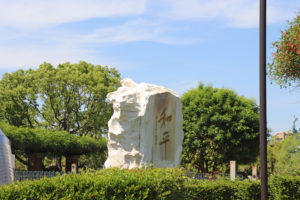 |
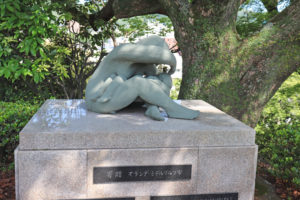 |
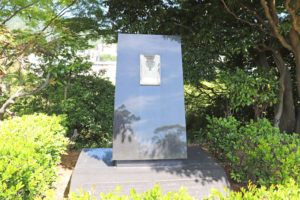 |
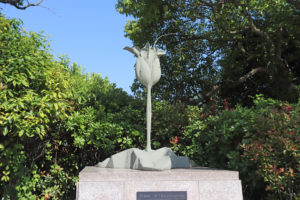 |
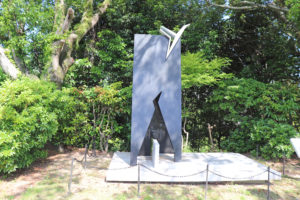 |
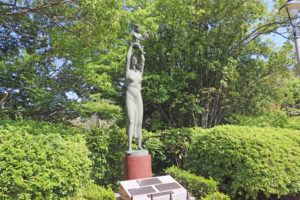 |
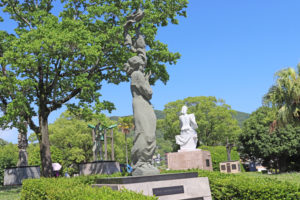 |
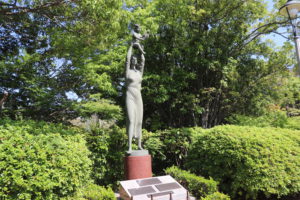 |
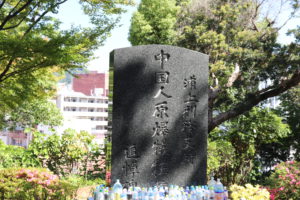 |
General information
| Address | Heiwakoen, Matsuyama-machi, Nagasaki-city |
| Access | 3 minutes walk from Heiwa-koen-shita Tram Station |

Ground Zero
Disastrous War must not be repeated. The plutonium atomic bomb exploded about 500m over the
central monument at 11:02 a.m. on August 9, 1945. The most part of Nagasaki was destroyed, and
a tremendous number of lives were lost. And about 70,000 of Nagasaki’s 240,000 residents died
instantly, and up to 60,000 were injured.
 |
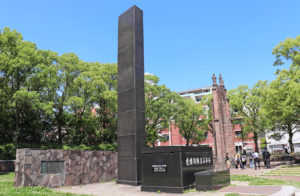 |
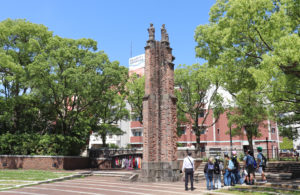 |
The radius of total destruction was about 1.6km, followed by fires across the northern portion of the
city to 3.2km south of the bomb.
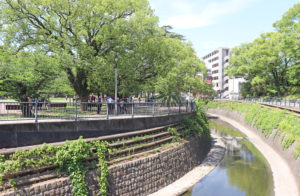 |
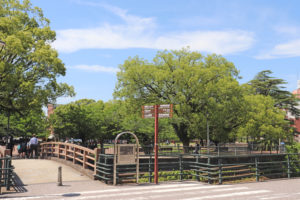 |
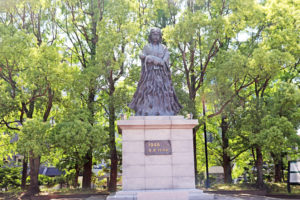 |
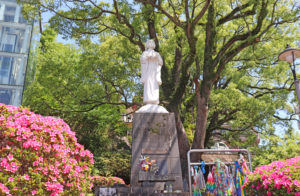 |
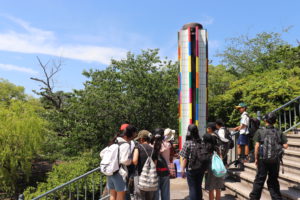 |
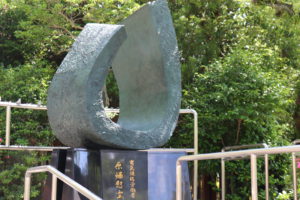 |
General information
| Address | Heiwakoen, Matsuyama-machi, Nagasaki-city |
| Access | 3 minuts walk from Heiwa-koen-shita Tram Station |

Home Tailor-made tours Study tours Christian Pilgrimage tours Golf tour Kyushu tour packages
Atomic Bomb Museum
Atomic Bomb Museum opened in Nagasaki Peace Park in 1996 as part of the 50th anniversary
project for the Nagasaki atomic bombing.
The museum replaced Nagasaki International Cultural Hall, where a number of artifacts related to
the atomic bombing were exhibited.
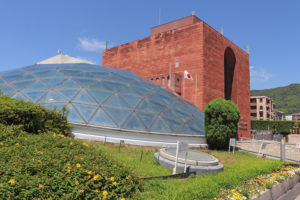 |
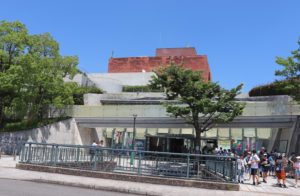 |
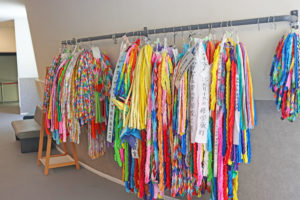 |
The museum exhibits a number of photograph that depict the devastation
caused by atomic bomb showing the lead-up to this tragic day, the history of the development of
nuclear arms and our desire for peace.
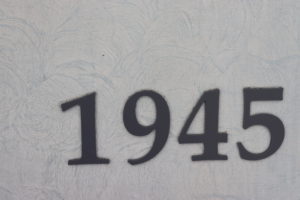 |
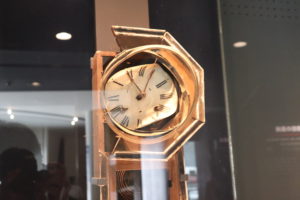 |
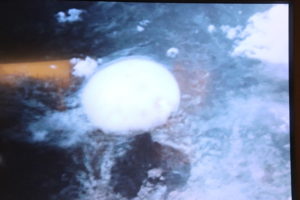 |
|
|
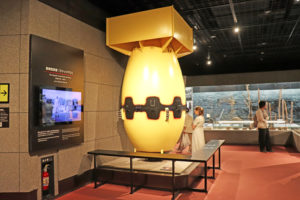 |
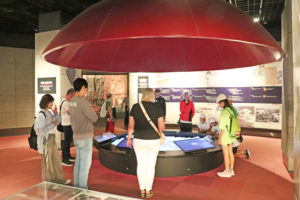 |
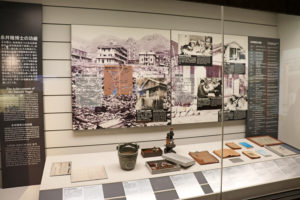 |
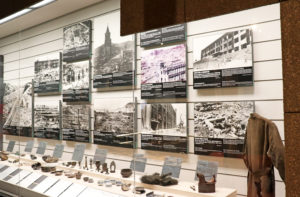 |
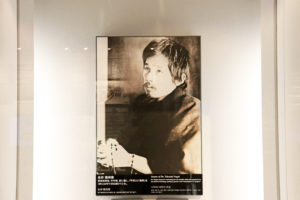 |
General information
| Address | 7-8 Hirano-machi, Nagasaki-city |
| Access |
5 minutes walk from Genbaku-shiryokan Tram Station |
| Open hours |
8:30 to 17:30 September to December 8:30 to 18:30 May to August 8:30 to 20:00 August 7 to 9 |
| Admission fee | JPY 200 |
| Days closed | December 29 to 31 |

Kyushu Travel Guide Kyushu Photo Collection Off the beaten path What our Customers have to say
Home Our Services About us Contact us Terms and Conditions Privacy Policy Staff Blog
Mount Inasa
Mount Inasa is one of the best view spot in Nagasaki. A 333 meter high mountain in close
distance to JR Nagasaki Station. The summit can be reached by ropeway or car and offers
great views over the city. And also, the magnificent night views from Mount Inasa is chosen
the three Major Night View in Japan along with Kitakyushu-city and Sapporo,
and the three Major Night View in the World along with Hong Kong and Monaco.
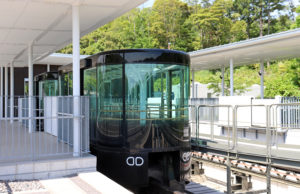 |
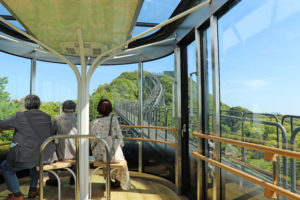 |
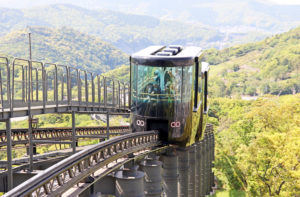 |
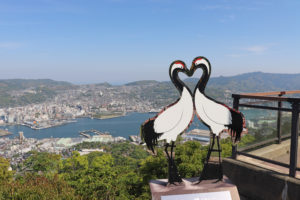 |
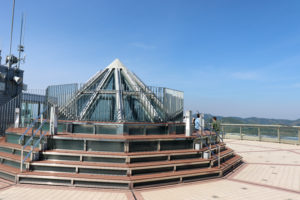 |
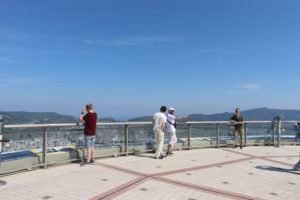 |
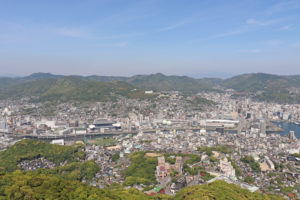 |
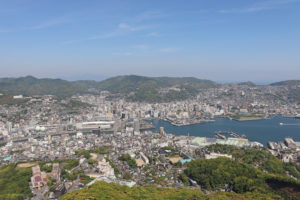 |
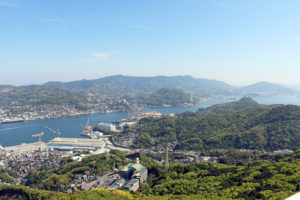 |
The three Major Night View in the World
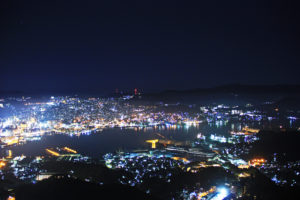 |
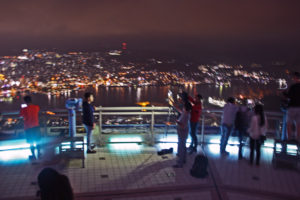 |
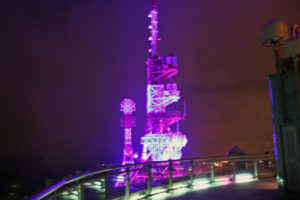 |
General information
Access
・20 minutes by car from JR Nagasaki station
・By Nagasaki bus and ropeway
10 minutes from JR Nagasaki station to Fuchi-jinjya Ropeway station
5 minutes from Fuchi-jinjya to sancho Ropeway station
・Inasayama Night View bus tour is available from Hotels in Nagasaki-city
by Nagasaki Yuran Bus
Nagasaki

Home Our Services About us Contact us

